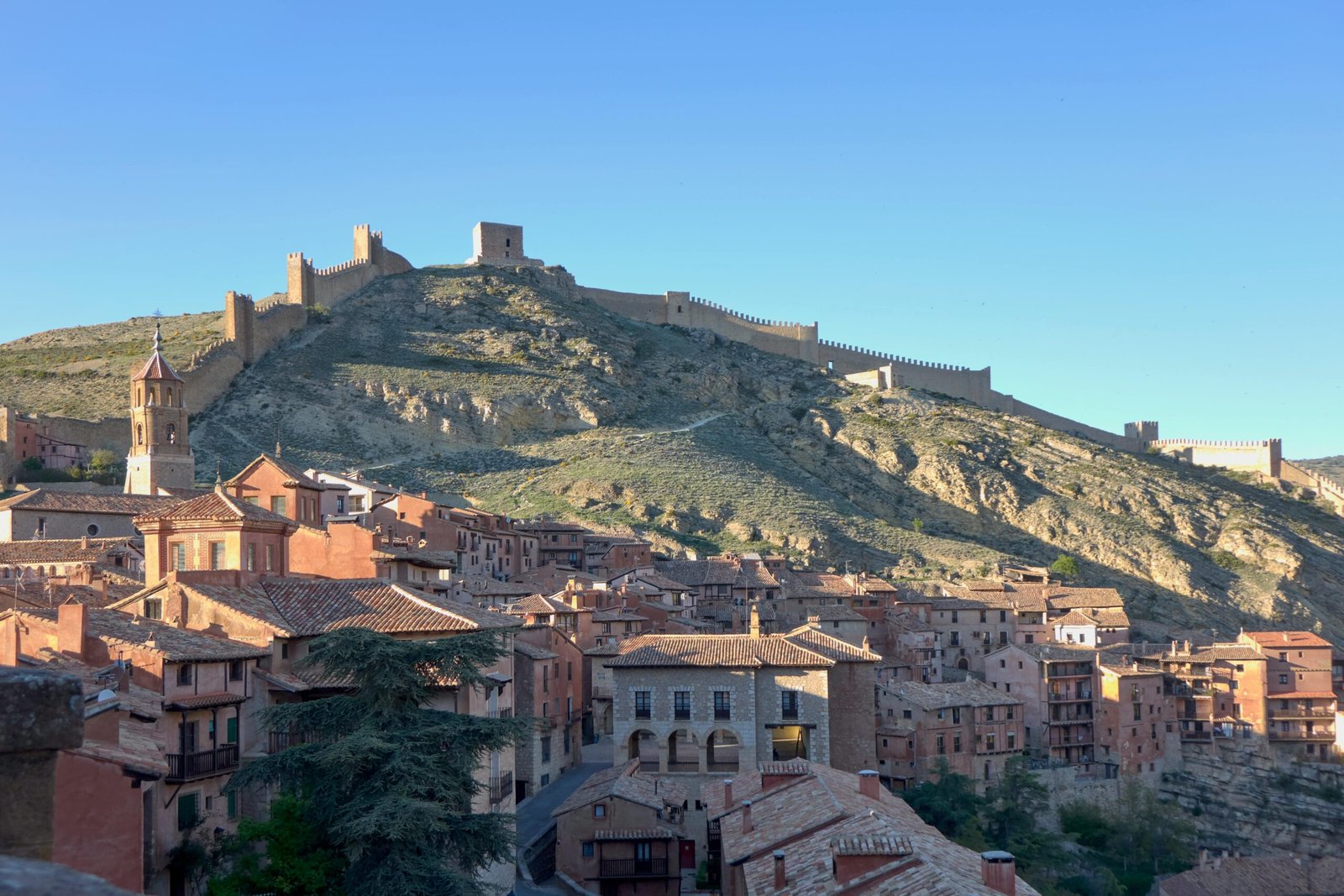Did you know that while 50 million Brits flock to Paris, Barcelona, and Rome each year, fewer than 10,000 venture to some of Europe’s most breathtaking medieval towns? I discovered this shocking reality during my three-month solo journey through Europe’s forgotten corners, armed with nothing but a rail pass and an insatiable curiosity for places that don’t appear on Instagram feeds.
Standing in the cobblestone square of Český Krumlov at sunrise, watching mist rise from the Vltava River while church bells echoed off 13th-century walls, I realized I’d stumbled upon something magical—a Europe that still feels genuinely untouched by mass tourism.
If you’re tired of battling selfie sticks and overpriced tourist menus, this guide reveals 10 extraordinary European towns where you can still experience authentic local culture, reasonable prices, and that increasingly rare commodity: genuine surprise. From fairy-tale castles to wine cellars carved into volcanic rock, these destinations offer everything major cities do—minus the crowds and tourist traps.
Why Hidden European Towns Are Perfect for British Travellers
Before we dive into specific destinations, let’s address why these lesser-known gems are particularly appealing for UK visitors. Brexit hasn’t dampened our wanderlust, but it has made us more selective about where we spend our travel pounds. These hidden towns offer exceptional value—often 40-60% cheaper than their famous counterparts—while providing richer cultural experiences.
Most importantly, they’re incredibly accessible. Thanks to Europe’s excellent rail network and budget airlines serving regional airports, you can reach any of these destinations within 4-6 hours from the UK.
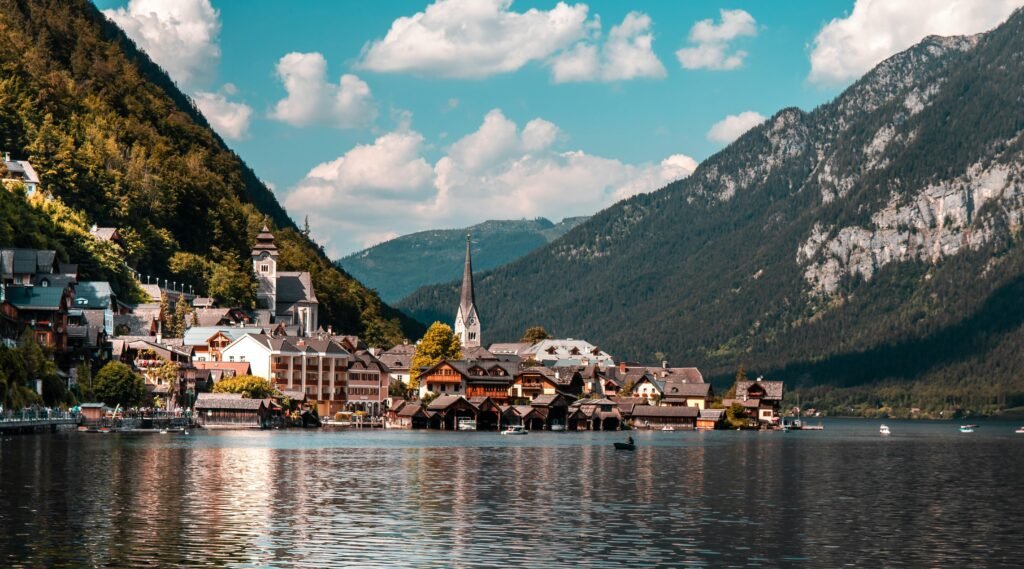
1. Hallstatt, Austria – The Fairytale Lakeside Village
The Experience That Takes Your Breath Away
Picture this: you’re sipping morning coffee at a lakeside café when swans glide past your table, their wake gently lapping against ancient wooden jetties. Behind them, pastel-colored houses cascade down the mountainside like scattered watercolor paint, their reflection shimmering in Hallstättersee’s mirror-like surface.
Hallstatt isn’t just pretty—it’s historically significant. This UNESCO World Heritage site has been continuously inhabited for over 4,000 years, built on wealth from the world’s oldest salt mine, which you can still tour today.
Practical Information for British Visitors
Getting There: Fly to Salzburg (2 hours from London), then take the hourly bus service (€15, 1.5 hours). Alternatively, rent a car for scenic flexibility.
Best Time to Visit: May-September for hiking and lake activities; December-February for Christmas markets and snow-covered charm.
Budget Breakdown:
- Accommodation: €80-120/night for lakeside guesthouse
- Meals: €25-35/day for local restaurants
- Salt mine tour: €30 adults
- Boat trip: €15
Insider Tips from a Local Guide
Maria, who runs Gasthof Simony, shared this gem: “Visit the Beinhaus (Bone House) at St. Michael’s Chapel early morning. It’s macabre but fascinating—600 painted skulls from locals who couldn’t afford cemetery plots.” She’s right; it’s hauntingly beautiful and completely free.
Don’t miss the funicular railway up to Salzwelten, the salt mine that made Hallstatt wealthy. The underground slides and salt lake boat ride feel like an adventure novel come to life.
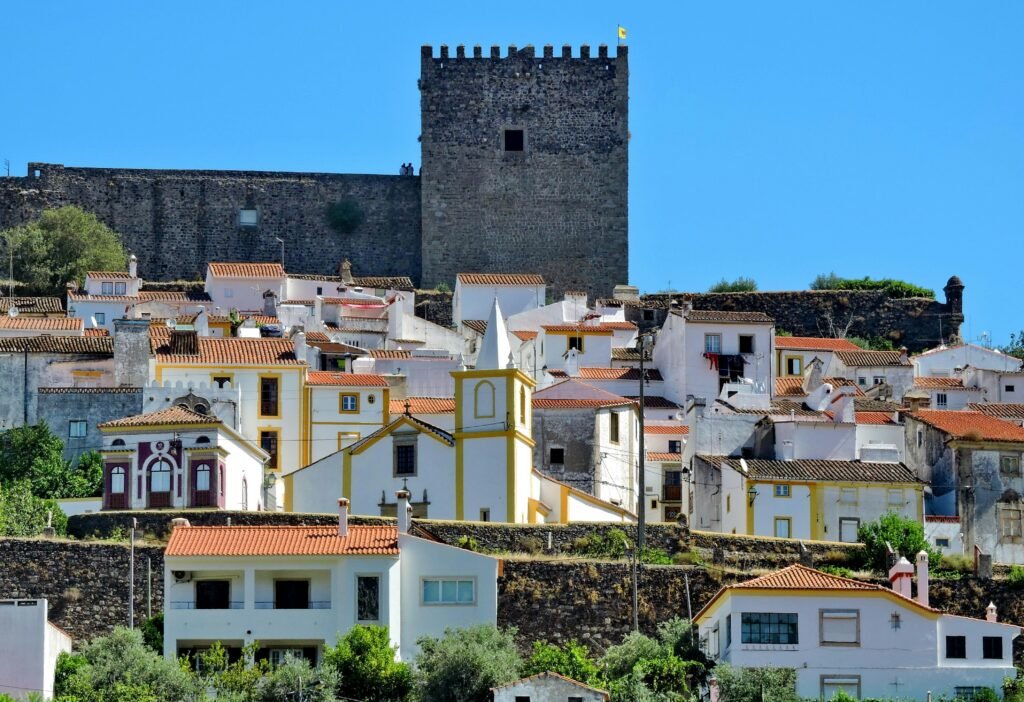
2. Monsaraz, Portugal – Medieval Fortress Above Golden Plains
Standing Where Knights Once Watched for Invaders
The first time I climbed Monsaraz’s ancient walls, I gasped. Spread below like a patchwork quilt were endless golden plains dotted with cork oaks, stretching to Spain’s horizon. This perfectly preserved medieval town, population 150, sits atop a strategic hill where Templar knights once guarded Portugal’s eastern frontier.
Walking these narrow streets at sunset, when honey-colored limestone glows like amber, feels like time travel. The silence is profound—broken only by church bells and the distant lowing of cattle in valleys below.
Why Monsaraz Appeals to British Travellers
Beyond its obvious beauty, Monsaraz offers something increasingly rare: complete tranquility. There are no traffic lights, chain stores, or tourist buses. Instead, you’ll find family-run restaurants serving exceptional Alentejo cuisine, tiny galleries showcasing local pottery, and some of Europe’s darkest skies for stargazing.
Practical Details
Getting There: Fly to Lisbon, drive 2 hours through beautiful Alentejo countryside. Car rental essential (€25-35/day).
Accommodation: Casa do Forno (€70-90/night) offers authentic medieval charm with modern comfort.
Must-Do Experiences:
- Sunset from the castle walls (free)
- Wine tasting at local quintas (€15-25)
- Night sky observatory tours (€12)
- Traditional pottery workshop (€35)
Local Secret
António, the town’s unofficial historian, revealed this: “Visit São Pedro do Corval, 10 minutes away. It’s Europe’s largest pottery center, with 20 workshops selling beautiful ceramics at fraction of Lisbon prices.”

3. Rothenburg ob der Tauber, Germany – Step Into a Medieval Fairy Tale
The Town That Inspired Disney Castles
Rothenburg literally means “red castle above the river,” but this perfectly preserved medieval town feels more like stepping inside a Brothers Grimm story. Every corner reveals timber-framed houses with flower boxes, cobblestone squares surrounded by ancient walls, and towers that seem to pierce the clouds.
I’ll never forget my first evening walk along the medieval walls. As street lamps flickered to life below, transforming narrow alleys into golden rivers of light, I understood why Walt Disney used Rothenburg as inspiration for several animated classics.
The Christmas Magic That Lasts All Year
While Rothenburg’s Christmas market is justifiably famous, the Deutsches Weihnachtsmuseum (German Christmas Museum) keeps the magic alive year-round. Owner Käthe Wohlfahrt showed me ornaments dating back 150 years, explaining how each region developed unique traditions.
“British visitors love our medieval atmosphere,” she told me, “but they’re always surprised by our year-round Christmas shop. It’s kitsch, yes, but it makes people happy.”
Planning Your Visit
Getting There: Fly to Frankfurt or Munich, then train to Steinach, followed by local connection (total journey: 4-5 hours, €45-65).
Best Times:
- April-October: Warm weather, all attractions open
- December: Christmas market magic
- January-February: Fewer crowds, cozy atmosphere
Budget Guide:
- Historic hotels: €90-150/night
- Traditional restaurants: €20-30/meal
- Walking tour: €8
- Medieval museum: €6
Hidden Gem Alert
The Tauber Valley cycling path offers stunning countryside views just minutes from town center. Rent bikes at Rad & Tat (€15/day) and follow the river through vineyards and traditional German villages.
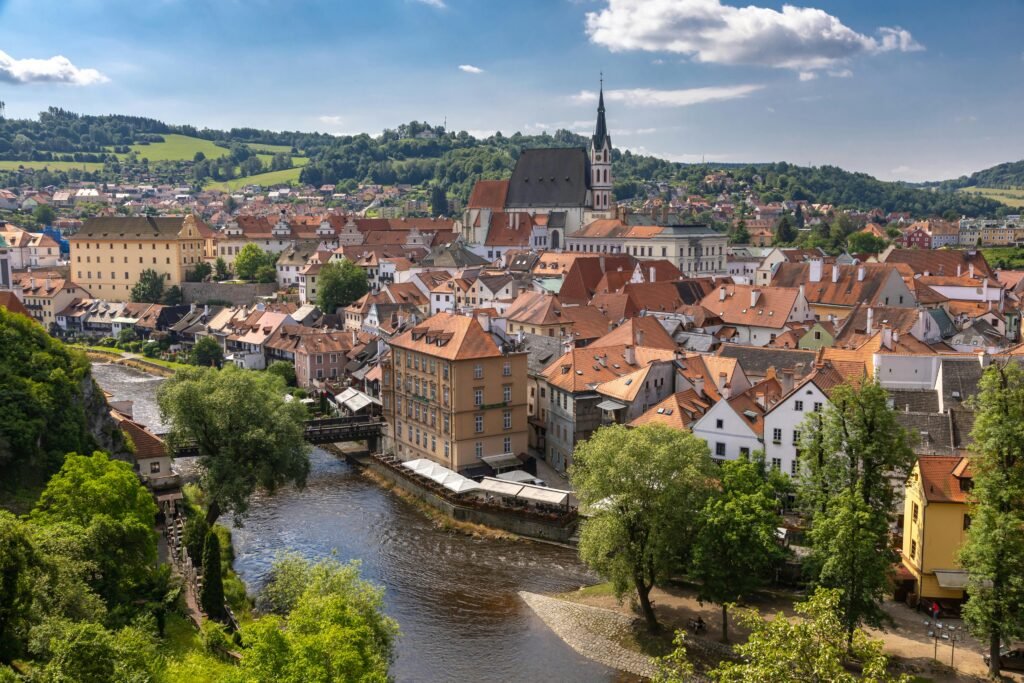
4. Český Krumlov, Czech Republic – Prague’s Beautiful Little Sister
A UNESCO Gem at Fraction of Prague’s Cost
When people ask me to describe Český Krumlov, I tell them to imagine Prague’s Old Town, shrunk to intimate proportions, wrapped around a fairy-tale castle, and priced for normal humans rather than oligarchs.
This South Bohemian masterpiece survived the 20th century’s tumultuous history remarkably intact. Communist neglect paradoxically preserved its medieval character, while post-1989 restoration returned its Renaissance splendor.
The Castle That Dominates Everything
Český Krumlov Castle, Europe’s second-largest after Prague’s, dominates the town like a benevolent giant. The highlight? The Baroque theater, still using original stage machinery from 1766. Watching period performances here feels like witnessing history rather than theater.
During my visit, local guide Pavel explained: “We have more UNESCO-protected buildings per square meter than anywhere in Czech Republic. Every step is literally walking through history.”
Practical Travel Information
Getting There: Fly to Prague, then Student Agency bus (3 hours, €15) or rent car for scenic flexibility.
Accommodation Gems:
- Hotel Goldener Brunnen: €60-85/night, castle views
- Pension Barbakan: €45-65/night, medieval charm
Food & Drink:
- Traditional Czech meals: €8-15
- Excellent local beer: €2-3/pint
- Krumlov’s famous garlic soup: €4-6
Seasonal Considerations
Summer (June-August): Warmest weather but busiest crowds. Book accommodation early.
Shoulder Seasons (April-May, September-October): Perfect balance of good weather and manageable crowds. My personal favorite.
Winter: Magical Christmas atmosphere, though some attractions close.
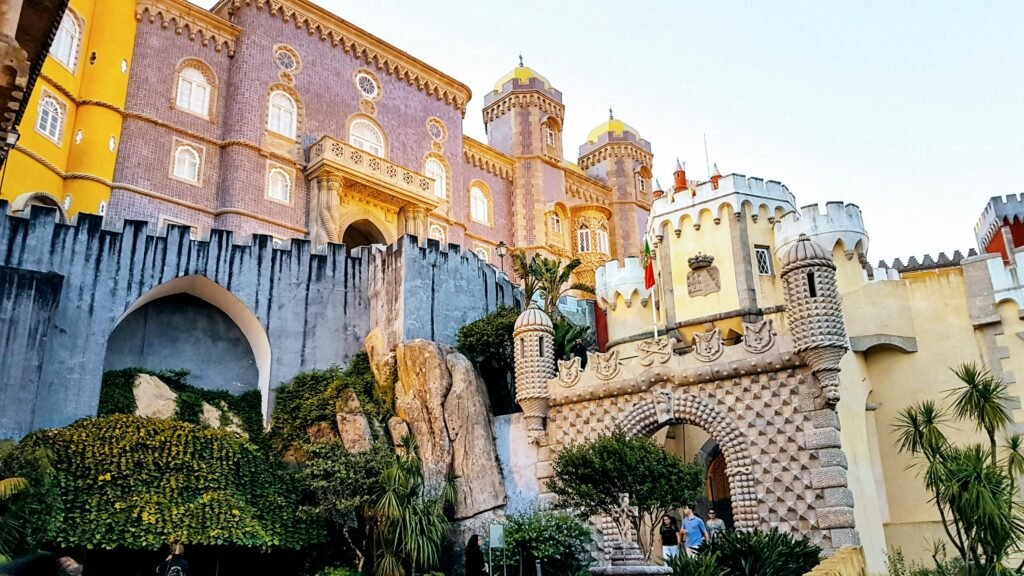
5. Sintra, Portugal – Romantic Palaces and Mystical Forests
Where Portuguese Royalty Escaped Lisbon’s Heat
Just 30 minutes from Lisbon lies a town so enchanting that Lord Byron called it “perhaps in every respect the most delightful in Europe.” Sintra’s microclimate creates lush forests that crown hilltops with extravagant palaces, each more fantastical than the last.
The Pena Palace, painted in eye-popping yellows and reds, looks like something Dr. Seuss might design after too much port wine. Yet somehow, it works perfectly within Sintra’s mystical landscape of ancient oaks and exotic gardens.
The Challenge of Seeing Everything
Here’s Sintra’s dilemma: too many incredible sights for one day. The Pena Palace, Quinta da Regaleira (with its mysterious initiation wells), the Moorish Sintra National Palace, and the cliff-top Cabo da Roca all demand attention.
My strategy? Stay overnight. Most day-trippers leave by 6 PM, transforming Sintra into a peaceful haven where you can explore without crowds.
Insider’s Itinerary
Day 1:
- Morning: Pena Palace and gardens (3-4 hours)
- Afternoon: Quinta da Regaleira’s mystical gardens (2-3 hours)
- Evening: Traditional Portuguese dinner in town
Day 2:
- Morning: Sintra National Palace
- Afternoon: Cabo da Roca (Europe’s westernmost point)
- Late afternoon: Monserrate Palace gardens
Practical Planning
Getting There: Train from Lisbon’s Rossio station (40 minutes, €4).
Transportation Within Sintra: Tourist bus ticket (€15/day) covers all major attractions. Walking between palaces isn’t realistic due to steep hills.
Costs:
- Palace entries: €10-14 each
- Combined tickets available: €28 for multiple sites
- Accommodation: €70-120/night for atmospheric quintas
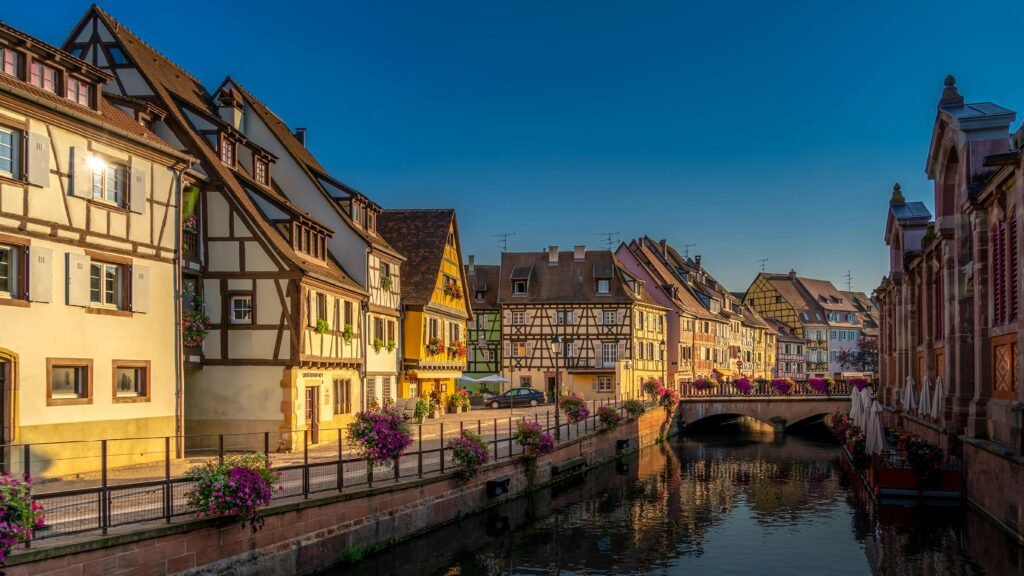
6. Colmar, France – Alsace’s Enchanting Wine Capital
The Real-Life Beauty and the Beast Village
Disney animators didn’t need to invent the village in Beauty and the Beast—they simply copied Colmar. This Alsatian gem combines German timber-framing with French elegance, creating architecture so charming it seems fictional.
The Petite Venise district, where medieval houses reflect in narrow canals, provides some of Europe’s most photographed scenes. But beyond its postcard beauty, Colmar offers serious wine culture and exceptional cuisine that reflects its unique Franco-German heritage.
The Wine Route That Starts at Your Doorstep
Colmar sits at the heart of Alsace’s Route des Vins, where 50 Grand Cru vineyards produce some of France’s most distinctive wines. Unlike Bordeaux or Burgundy, Alsatian wines are refreshingly approachable—both in price and complexity.
Local sommelier Jean-Luc introduced me to Gewürztraminer paired with foie gras, explaining: “British visitors often discover their new favorite wine here. Our whites are elegant but not intimidating, perfect for your climate.”
Cultural Immersion Opportunities
The Unterlinden Museum houses the Isenheim Altarpiece, one of medieval Europe’s greatest artworks. But equally fascinating is wandering cobblestone streets during the Tuesday and Saturday markets, where local producers sell everything from Munster cheese to handcrafted pottery.
Planning Your Colmar Adventure
Getting There:
- TGV to Strasbourg, then regional train (45 minutes total journey from London: 5-6 hours)
- Budget flights to Basel, then train (1 hour)
Accommodation:
- Historic center hotels: €80-150/night
- Wine estate guesthouses: €60-100/night
Must-Try Experiences:
- Wine cellar tours: €15-25 with tastings
- Traditional Alsatian restaurants: €25-35/meal
- Boat tours of Petite Venise: €8
Perfect Day Itinerary:
- Morning: Unterlinden Museum and old town walking tour
- Afternoon: Wine tasting in nearby Riquewihr or Kaysersberg
- Evening: Traditional winstub dinner

7. Gimmelwald, Switzerland – The Alpine Village That Time Forgot
Finding Europe’s Last Authentic Mountain Community
Rick Steves calls Gimmelwald “the Alps of your dreams,” and after spending a week in this car-free village of 130 residents, I understand why. Perched on a narrow ledge 4,600 feet above the Lauterbrunnen Valley, Gimmelwald offers front-row seats to the Eiger, Mönch, and Jungfrau peaks.
What makes Gimmelwald special isn’t just the scenery—it’s the authentic farming community that continues traditional Alpine life. Cows still wear bells, farmers cut hay by hand on impossible slopes, and the village pub doubles as the town meeting hall.
The Reality of Swiss Prices
Let’s be honest: Switzerland is expensive. But Gimmelwald offers relative value within Swiss context, plus experiences impossible to price—like waking to alphorn melodies echoing off glacier-crowned peaks.
Budget Reality Check:
- Mountain hut accommodation: €40-60/night (shared facilities)
- Simple meals: €20-30
- Cable car access: €25 return
- Hiking: Free and spectacular
Hiking That Changes Your Perspective
The trail from Gimmelwald to Mürren ranks among Europe’s most spectacular walks. The path clings to cliffsides through meadows so green they seem artificial, while waterfalls thunder into the valley below.
Local farmer Walter shared this insight: “British hikers are always amazed we farm these steep slopes. But our families have lived here 400 years—we know every rock, every dangerous path.”
Getting There and Staying Connected
Access: Train to Lauterbrunnen, then cable car to Gimmelwald (2.5 hours from Zurich airport).
Accommodation: Mountain Hostel offers dormitory and private rooms with incredible views. Book early—only 30 beds available.
What to Pack: Proper hiking boots essential. Weather changes rapidly at altitude.
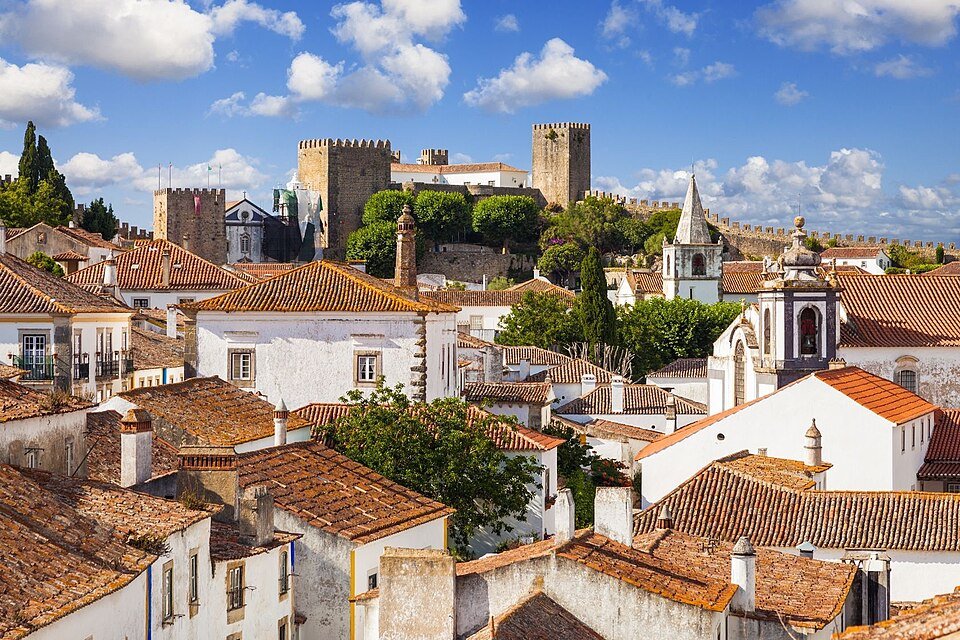
8. Óbidos, Portugal – The Wedding Gift Town
A Medieval Town Wrapped in Walls
In 1282, King Dom Dinis gave the fortified town of Óbidos to Queen Isabel as a wedding present. Smart move—this perfectly preserved medieval settlement, encircled by 14th-century walls, remains one of Portugal’s most romantic destinations.
Walking Óbidos’s ramparts at sunset provides 360-degree views over terracotta rooftops to rolling countryside beyond. The town is tiny—you can cross it in 10 minutes—but its concentrated charm creates lasting memories.
The Ginja Cherry Liqueur Tradition
Óbidos is famous throughout Portugal for ginja, a sweet cherry liqueur served in edible chocolate cups. Local producer Maria Santos explained the tradition during my visit: “We’ve made ginja here for 400 years. Each family has secret recipes passed down through generations.”
Sampling different versions becomes a delicious treasure hunt through narrow streets lined with whitewashed houses trimmed in yellow and blue.
Practical Portuguese Paradise
Getting There: Rental car from Lisbon (1 hour) provides maximum flexibility for exploring central Portugal. Bus services available but limited.
Timing Your Visit:
- Spring (March-May): Wildflowers bloom, perfect weather
- Summer: Busiest but warmest for evening wall walks
- Autumn: Harvest season, fewer crowds
- Winter: Quiet and atmospheric
Accommodation: Pousada Castelo Óbidos offers unique opportunity to sleep within castle walls (€120-180/night).
Day Trip Potential: Easily combined with Nazaré’s giant waves or Batalha’s monastery for full-day Portuguese adventure.
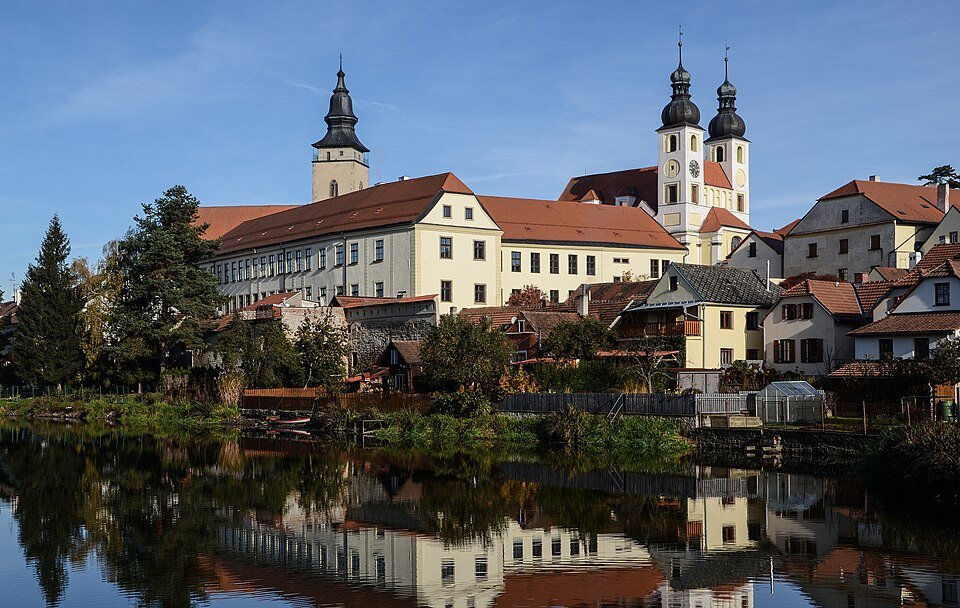
9. Cesky Krumlov’s Hidden Rival: Telč, Czech Republic
The Renaissance Gem Nobody Talks About
While tour groups flood Český Krumlov, savvy travelers discover Telč, a Renaissance masterpiece equally stunning but refreshingly uncrowded. This UNESCO site’s main square ranks among Europe’s most beautiful, lined with pastel-colored houses that mirror perfectly in surrounding fishponds.
Telč feels like a film set frozen in time. The Renaissance château, Gothic St. James Church, and medieval fortifications create architectural harmony rarely found elsewhere.
The Fishpond Economy That Built Beauty
Telč’s wealth came from medieval fishpond systems that still operate today. These artificial lakes not only provided protein for growing populations but created the water features that make modern Telč so photogenic.
Local historian Dr. Novák explained: “British visitors often ask why we built so many fishponds. The answer is simple—carp was medieval fast food, and Telč was McDonald’s headquarters.”
Planning Your Czech Hidden Gem
Getting There: Train from Prague to Jihlava, then bus to Telč (3.5 hours total, €25).
Accommodation: Hotel Černý Orel provides period atmosphere right on main square (€55-75/night).
Perfect Timing: May-September for warmest weather; July for Renaissance Festival with period costumes and music.
What Makes It Special: Telč offers Český Krumlov’s beauty without crowds or inflated prices. Meals cost €8-12, beer €2, and you can actually enjoy attractions without fighting for photos.
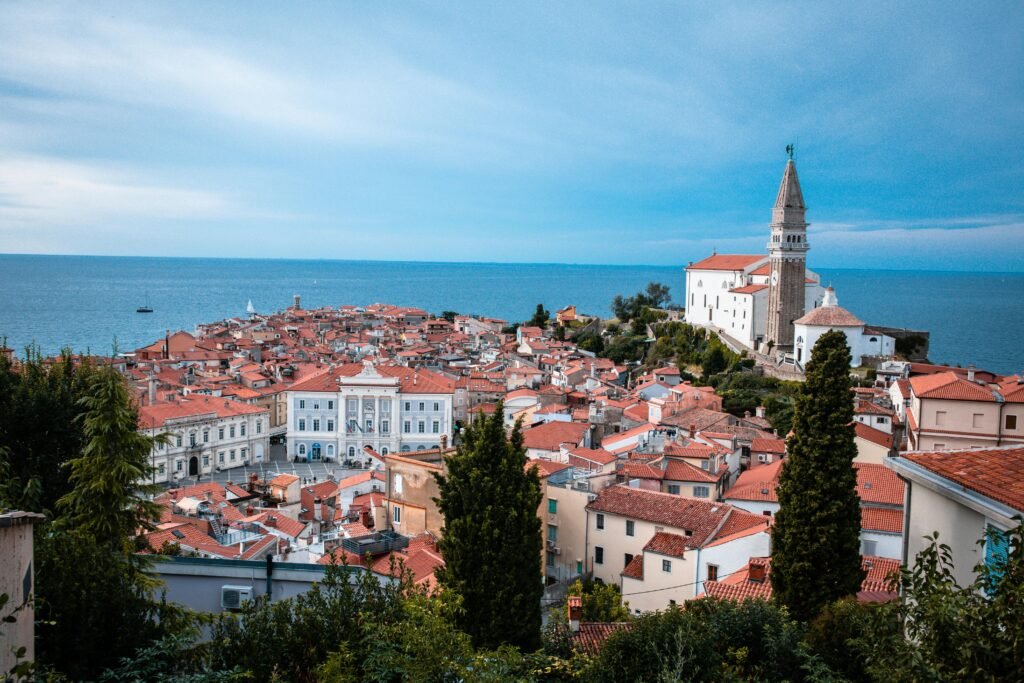
10. Piran, Slovenia – The Venetian Jewel on Slovenia’s Coast
Where Venice Meets the Balkans
Perched on a narrow peninsula jutting into the Adriatic, Piran looks like Venice’s little sister—if Venice were affordable, less crowded, and surrounded by crystal-clear swimming water.
This former Venetian trading post retains Italian character while embracing Slovenian warmth. Narrow streets climb from the harbor to St. George’s Church, offering stunning coastal views that rival the French Riviera at a fraction of the cost.
The Tartini Square Magic
Piran’s main square, shaped like a violin in honor of native composer Giuseppe Tartini, provides the perfect stage for people-watching. Red-roofed houses create natural amphitheater seating for observing daily Slovenian life unfold below.
During my evening aperitivo at Café Teater, owner Marko shared local insight: “British guests love our combination of Mediterranean culture with Central European prices. You get Italian atmosphere without Italian costs.”
Swimming in History
Unlike many historic coastal towns, Piran offers excellent swimming directly below medieval walls. The water is remarkably clean—Slovenia takes environmental protection seriously—and numerous beaches provide alternatives to crowded town center.
Practical Piran Planning
Getting There: Fly to Ljubljana, bus to Piran (2.5 hours, €12). Car rental allows exploration of beautiful Istrian Peninsula.
Accommodation: Boutique hotels: €70-120/night; apartments: €50-80/night.
Activities:
- Sea kayaking around peninsula: €25
- Wine tasting in nearby Istrian hills: €20-30
- Secovlje Salt Pans tour: €8
Perfect Day: Morning exploration of old town, afternoon swimming at nearby Fiesa beach, sunset aperitivo in Tartini Square.
Making Your Hidden Europe Adventure Happen
Transportation Strategies for British Travellers
Budget Airlines: EasyJet, Ryanair, and Wizz Air serve regional airports near these hidden gems. Frankfurt-Hahn for Rothenburg, Salzburg for Hallstatt, Prague for Czech towns.
Rail Passes: Eurail passes become economical for visiting 3+ destinations. The flexibility is worth premium for spontaneous travelers.
Rental Cars: Essential for maximum flexibility, especially in rural areas like Monsaraz or Gimmelwald access points.
Accommodation Booking Strategies
Book Direct: Many small European hotels offer 10-15% discounts for direct bookings, plus better rooms and flexible cancellation.
Shoulder Season Advantages: April-May and September-October provide 30-40% savings with excellent weather and fewer crowds.
Local Guesthouses: Family-run pensions often provide better value and cultural insight than international chains.
Money-Saving Tips from the Road
- Lunch vs. Dinner: Many European restaurants offer identical menus at lunch for 30-40% less
- Local Markets: Shopping at weekly markets saves money while providing cultural experiences
- City Tourist Cards: Most towns offer cards combining transportation, attractions, and discounts
- Happy Hours: Even small European towns have aperitivo traditions with excellent value
Your Next Steps to Hidden European Magic
These 10 destinations prove that Europe’s best experiences often lie beyond guidebook headlines. Each offers authentic culture, reasonable prices, and memories that last lifetimes—without fighting crowds for photos or paying premium prices for basic services.
Action Plan:
- Choose 2-3 destinations that match your interests and budget
- Check flight prices to nearest major airports
- Book accommodation directly with properties for best rates
- Create flexible itinerary allowing spontaneous discoveries
- Pack light—you’ll want room for local purchases
The Europe of your dreams still exists, waiting in medieval squares and mountain villages where locals still greet strangers with genuine curiosity rather than tourist fatigue. These hidden gems offer what mass tourism has forgotten: the magic of genuine discovery.
Which hidden European town calls to your wanderlust? Start planning today—these secrets won’t stay hidden forever.

